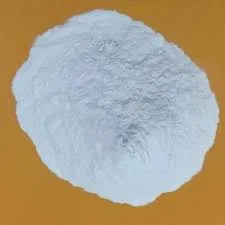
Dàmh . 13, 2024 09:17 Back to list
Hydroxypropyl Methylcellulose Powder Applications and Benefits in Various Industries
Hydroxypropyl Methylcellulose Powder A Multifunctional Polymer in Modern Applications
Hydroxypropyl methylcellulose (HPMC) powder is a versatile cellulose ether widely recognized for its remarkable properties and extensive applications across various industries. This water-soluble polymer is derived from natural cellulose, which has been chemically modified to enhance its characteristics, making it a valuable ingredient in pharmaceuticals, food, construction, and personal care products.
Chemical Structure and Properties
HPMC is a white, odorless powder that is soluble in cold water, forming a transparent, viscous solution when dissolved. Its unique structure consists of hydroxypropyl and methyl groups attached to the cellulose backbone, which provides excellent binding, thickening, and film-forming capabilities. The degree of substitution of these groups influences its solubility, viscosity, and thermal stability, allowing manufacturers to tailor HPMC to specific applications.
One of the standout properties of HPMC is its ability to act as a thickener. When incorporated into formulations, it promotes a desirable viscosity and texture, which is crucial in products such as sauces, dressings, and various cosmetic preparations. Additionally, HPMC's film-forming ability is instrumental in the development of coatings for tablets in the pharmaceutical sector, providing controlled release characteristics and improved stability.
Pharmaceutical Applications
In the pharmaceutical industry, HPMC is invaluable due to its role as an excipient in drug formulation. Its properties make it suitable for use in sustained-release formulations, allowing for a gradual release of active ingredients over time. This is particularly useful in ensuring that medications maintain therapeutic levels in the bloodstream without causing peaks and troughs in drug concentration.
Furthermore, HPMC is utilized in producing hydrophilic matrices for oral drug delivery systems. When mixed with active pharmaceutical ingredients, HPMC creates a gel-like matrix that swells upon contact with gastrointestinal fluids. This swelling ensures a controlled release of the drug, enhancing bioavailability while minimizing side effects associated with rapid drug release.
Food Industry Applications
hydroxypropyl methylcellulose powder

In the food industry, HPMC serves multifaceted roles. Its thickening properties significantly improve the texture and mouthfeel of various food products. For example, in gluten-free formulations, HPMC acts as a binding agent, mimicking the elasticity typically provided by gluten, thus improving the quality of baked goods.
Moreover, HPMC is approved for use as a food additive and is employed as a stabilizer in sauces, dressings, and dairy products. Its ability to form stable emulsions helps maintain the product's consistency and extend shelf life. Additionally, HPMC is often used in vegan and vegetarian formulations as a substitute for egg whites and other animal-derived ingredients.
Construction and Personal Care Applications
Beyond pharmaceuticals and food, HPMC also finds significant use in the construction industry, particularly in cement-based materials. It enhances workability, improves adhesion, and helps control water retention in mortars and tile adhesives. This results in better performance and durability of building materials, making HPMC an integral component in modern construction practices.
In the realm of personal care, HPMC is commonly found in cosmetics and skincare products. It functions as a thickening and stabilizing agent in lotions, creams, and gels. Its ability to form smooth, viscous solutions enhances user experience, making products easier to apply and improving spreadability on the skin.
Environmental Considerations and Safety
HPMC is regarded as a safe and non-toxic substance. Its origins from cellulose, a natural polymer, align with rising consumer demands for environmentally friendly and sustainable products. As a biodegradable material, HPMC presents a lower ecological burden compared to synthetic polymers, making it an attractive choice for eco-conscious manufacturers.
Conclusion
Hydroxypropyl methylcellulose powder exemplifies the intersection of science and versatility in modern applications. Its unique properties facilitate innovation in diverse fields, from pharmaceuticals to food and construction. As industries continue to evolve and focus on sustainable practices, HPMC stands out as a safe, effective, and multifunctional ingredient, ensuring that it will remain a staple in future formulations and products.
-
The Widespread Application of Redispersible Powder in Construction and Building Materials
NewsMay.16,2025
-
The Widespread Application of Hpmc in the Detergent Industry
NewsMay.16,2025
-
The Main Applications of Hydroxyethyl Cellulose in Paints and Coatings
NewsMay.16,2025
-
Mortar Bonding Agent: the Key to Enhancing the Adhesion Between New and Old Mortar Layers and Between Mortar and Different Substrates
NewsMay.16,2025
-
HPMC: Application as a thickener and excipient
NewsMay.16,2025
-
Hec Cellulose Cellulose: Multi functional dispersants and high-efficiency thickeners
NewsMay.16,2025







